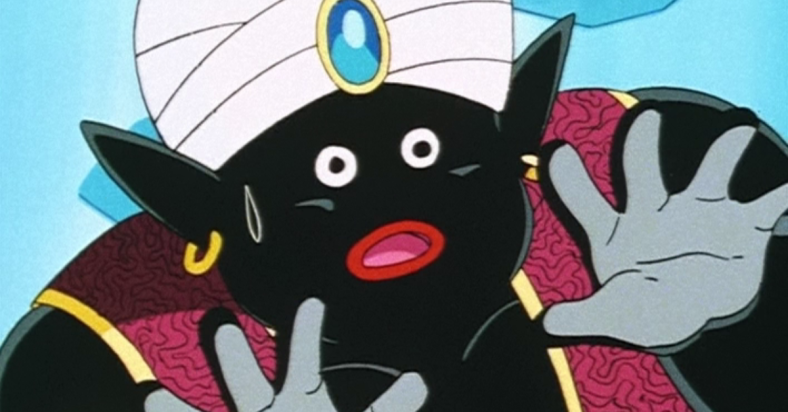Hours After ‘Dragon Ball’ Creator’s Death Made Public, Sweet Baby Inc. Writer Attempts To Shame Akira Toriyama Over Mr. Popo’s Design

It seems that in addition to ‘diversity’ and ‘inclusion’, Sweet Baby Inc. also includes ‘never letting a tragedy go to waste’ among their core values, as just hours after the tragic passing of Dragon Ball creator Akira Toriyama was made public, company writer Chris Kindred attempted to grandstand on his grave by raising the tired-and-absolutely-false argument that the mangaka’s design of series mainstay Mr. Popo was nothing but a racist caricature of black people.

RELATED: Mainstream Press, Video Game Devs Come Out In Full Force To Run Defense For Sweet Baby Inc.
As announced by the Dragon Quest co-creator’s own Bird Studio and the independent company currently responsible for the Dragon Ball IP Capsule Corp Tokyo on March 7th, the esteemed mangaka passed away roughly a week at the age of 68, his reported cause of death being an acute subdural hematoma (in layman’s terms, a pooling of blood in his brain).
“It’s our deep regret that he still had several works in the middle of creation with great enthusiasm,” read Bird Studio and Capsule Corp Tokyo’s message confirming the tragic news. “Also, he would have many more things to achieve. However, he has left many manga titles and works of art to this world. Thanks to the support of so many people around the world, he has been able to continue his creative activities for 45 years.”

The morning after this announcement caused heartbreak across the globe, Kindred – who is perhaps best known for having been the first individual involved in the ongoing discourse surrounding his company to call for direct action against an ideological opponent in the form of a false reporting campaign directed towards the administrator of the Sweet Baby Inc. Detected Steam Curator List- took to Twitter not to offer his condolences, but rather set-up a racially-charged soap-box on the mangaka’s grave.
“Toriyama gave us the best and worst black characters in anime in the same series,” wrote the Sweet Baby Inc. company writer. “It took range to do that.”

RELATED OPINION: Sweet Baby Inc. Is Not An All-Powerful DEI Supervillain – They’re A Symptom Of A Larger Problem
While Kindred did not specific who among Dragon Ball‘s extensive cast he considered to be the “best” and “worst black characters in anime”, in light of the years of debate surrounding his design, it’s more than likely that the character who drew the latter label was none other than Mr. Popo.

Introduced in the 163rd of the Dragon Ball manga, Mr. Popo is a resident of the Other World who was assigned to serve as an attendant to all of Earth’s various Guardians (such as Kami and Dende).
Upon his first encounter with Goku, Mr. Popo is seen to be an extremely skilled martial artist, being able to shrug off and evade with ease the very same attacks the young warrior previously used to put an end to the Demon King Piccolo.
After Goku proves his worth as a warrior by ascending to the top of Kami’s Lookout, Mr. Popo spends the next three years helping him train and improve his skills in service of killing Piccolo’s son, Piccolo Jr., at the then-upcoming World Martial Arts Tournament.

Unfortunately for Mr. Popo, like most characters in Dragon Ball who aren’t named ‘Goku’ or ‘Vegeta’, as time progressed, the eternal attendant saw a severe reduction in his role in the series – so much so that by the Z part of Toriyama’s seminal work, he was relegated to nothing more than an occasional background character – though he does get one last moment to ‘shine’ in the Buu Saga when he introduces Trunks and Goten to the concept of the fusion dance (and in the anime, he can even be seen holding his own against the Super Saiyan-powered Goten and Trunks).

As readers may have surmised at this point, thanks to his design, Mr. Popo has often drawn accusations of racism from Western audiences, with most criticisms drawing parallels between his dark-skinned, thick-lipped appearance and the racist ‘blackface’ depictions of black people seen through 18th and 19th century entertainment.
However, in a twist of irony, despite those who raise this comparison doing so out of a purported desire to combat racism, their entire argument hinges on ignoring Asian culture in favor of a Western-centric narrative.

Case in point, Mr. Popo’s design is not based on America-specific racist iconography.
Rather, it is inspired by the deity Mahakala, a deity in the Buddhist and Hindu religions whose regular depiction with jet-black skin, a giant red mouth, and a propensity for turban-based headwear all serve to help reinforce his image as a fierce protector.
As such, not only is Mr. Popo’s design not a racist caricature, he also is in no way, shape, or form meant to represent a black-skinned individual.

To this end, one must ask the question: If a writer can’t be bothered to actually research and engage with other cultures, instead choosing to force their own specific worldview onto them, can they truly claim to be a proponent of ‘diversity and inclusion’?
Of course not – but that clearly won’t stop Sweet Baby Inc. from continuing to turn their noses up at those who actually do
